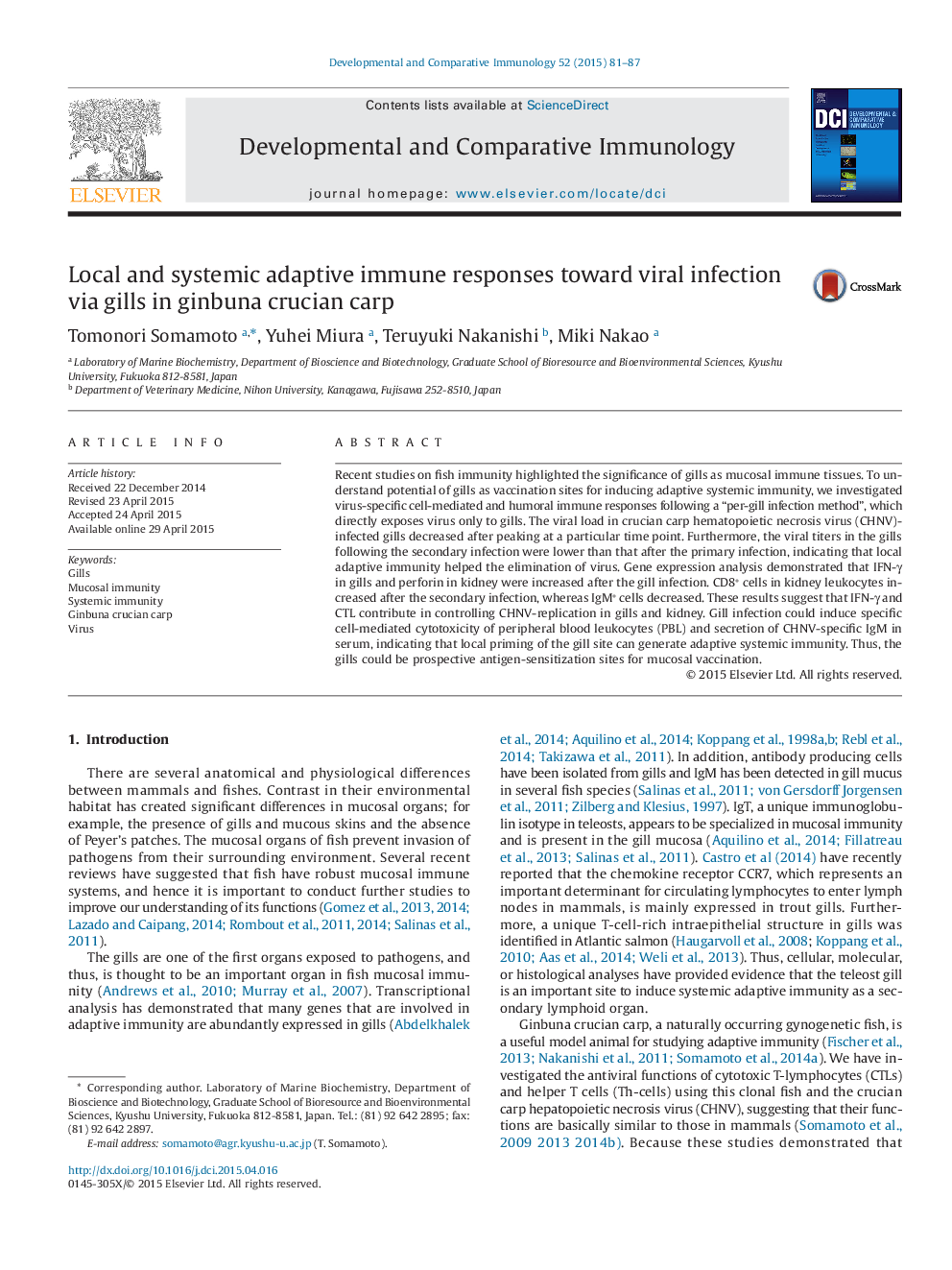| Article ID | Journal | Published Year | Pages | File Type |
|---|---|---|---|---|
| 2428954 | Developmental & Comparative Immunology | 2015 | 7 Pages |
•Immune responses in ginbuna crucian carp upon per-gill infection.•Local priming via gills generates adaptive systemic immunity.•The gills are prospective sites for mucosal vaccination.
Recent studies on fish immunity highlighted the significance of gills as mucosal immune tissues. To understand potential of gills as vaccination sites for inducing adaptive systemic immunity, we investigated virus-specific cell-mediated and humoral immune responses following a “per-gill infection method”, which directly exposes virus only to gills. The viral load in crucian carp hematopoietic necrosis virus (CHNV)-infected gills decreased after peaking at a particular time point. Furthermore, the viral titers in the gills following the secondary infection were lower than that after the primary infection, indicating that local adaptive immunity helped the elimination of virus. Gene expression analysis demonstrated that IFN-γ in gills and perforin in kidney were increased after the gill infection. CD8+ cells in kidney leukocytes increased after the secondary infection, whereas IgM+ cells decreased. These results suggest that IFN-γ and CTL contribute in controlling CHNV-replication in gills and kidney. Gill infection could induce specific cell-mediated cytotoxicity of peripheral blood leukocytes (PBL) and secretion of CHNV-specific IgM in serum, indicating that local priming of the gill site can generate adaptive systemic immunity. Thus, the gills could be prospective antigen-sensitization sites for mucosal vaccination.
